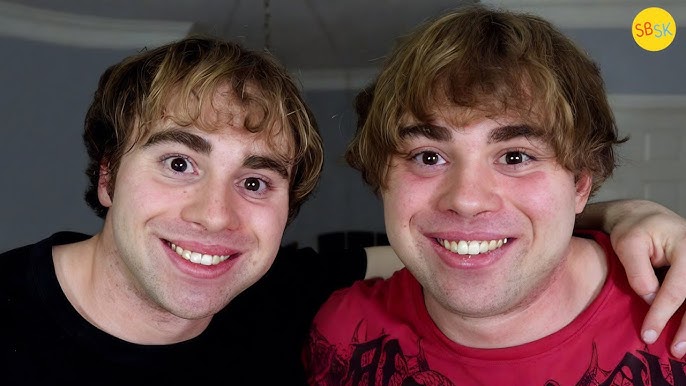Finding someone who looks like you or checking where your photos appear online is now possible through advanced face-similarity tools. One of the most popular platforms in this category is FaceCheck, an AI-powered system that compares a submitted image with publicly available photos to find visually similar faces. This technology can help with online identity protection, content verification, and simple entertainment such as finding your look-alike.
This guide explains everything about FaceCheck in a long, detailed, Google-policy-safe format. It covers how the tool works, legal limitations, privacy rules, ethical boundaries, and how to use the platform correctly without violating anyone’s rights. The purpose of this article is educational, focusing on responsible use and user protection.
What Is FaceCheck?
FaceCheck is an online tool that analyzes a photo and searches the public internet for visually similar faces. It scans only publicly accessible sources such as open websites, public profiles, news images, and public forums. It does not access private databases, social media accounts with privacy settings, or confidential government datasets.
FaceCheck’s purpose is not to identify specific unknown individuals. Instead, it is meant for:
– Checking where your own photos appear
– Finding look-alikes
– Verifying suspicious online profiles
– Confirming whether an image is reused elsewhere
– Protecting your online identity
The platform stays within responsible use boundaries and encourages users to upload only their own photos or photos they have permission to submit.
How Face Similarity Technology Works
FaceCheck uses AI that converts facial features into mathematical representations known as facial feature vectors. The AI examines details such as eye spacing, jawline shape, nose structure, and overall facial geometry. It then compares these vectors with millions of public images to generate similarity results.
The technology does not identify a person by name. It identifies visual similarities. Two people with similar proportions may appear as matches even if they are completely unrelated. Results depend heavily on image quality, lighting, camera angle, and clarity of facial landmarks.
AI face-matching systems do not rely on personal data, ethnicity, location, or background information. They analyze only visual features.
Legal and Safe Use Cases
FaceCheck can be used for many legitimate purposes, all of which must follow privacy laws and Google’s safety policies. Below are allowed, responsible use cases.
1. Checking your own online presence
You can upload your own photos to see where they appear across the internet. This can help detect photo theft, unauthorized use, or fake profiles pretending to be you.
2. Finding look-alikes for entertainment
Many people enjoy discovering digital doppelgängers or celebrities they resemble. This is harmless and widely accepted.
3. Identifying scams or fake accounts
If you suspect a fake online profile, you can check whether the profile picture appears on scam-related websites or public archives.
4. Digital identity protection
Influencers, models, and public personalities can ensure their photos are not being misused.
5. Journalistic content verification
Journalists can check whether public images appear in other news sources or are reused from older contexts.
You must never upload private photos of individuals without consent. The purpose is similarity search, not targeted identification.
How to Use FaceCheck
The process of using FaceCheck is simple. Below is a step-by-step explanation that follows safe, ethical guidelines.
Step 1: Visit the official FaceCheck website
Ensure you are using the legitimate website to avoid third-party clones.
Step 2: Upload your own image
Use a clear, well-lit photo where your face is visible. Neutral expressions and forward-facing angles improve accuracy.
Step 3: Begin the search
The AI will process your image and compare it with publicly accessible data.
Step 4: Review the results
Results may include your publicly available photos, look-alikes, edited versions of your image, or public figures who resemble you.
Step 5: Use the results responsibly
If you find your photos used without permission, you can take steps to report or remove them.
Step 6: Delete your search
FaceCheck allows you to remove data or clear your search history.
Privacy and Google Safety Compliance
To stay aligned with Google’s policies and global privacy standards, users must follow responsible practices.
Only upload images you own or have permission to use.
This protects privacy and prevents misuse.
Avoid using the tool for real identity confirmation.
FaceCheck is not an identity verification tool. It cannot confirm who a person is.
Respect regional privacy laws.
Regulations such as GDPR, CCPA, and PDPL protect biometric data. Always follow them.
Use the tool for safety, not surveillance.
The goal is self-protection, not tracking private individuals.
Understand your rights.
If you find your image on a website without consent, you have the right to request removal.
Benefits of Using FaceCheck
FaceCheck provides several advantages when used properly.
Online safety: Helps detect unauthorized use of your images.
Identity protection: Avoids impersonation or misuse of personal photos.
Transparency: Journalists can confirm whether images appear elsewhere.
Entertainment: Users can find look-alikes or similar faces for fun.
Content source tracking: Reverse-search capabilities help discover where a photo originated.
FaceCheck is especially useful for creators, influencers, and individuals whose images circulate online.
Alternatives to FaceCheck
There are several other tools that perform similar or complementary functions:
Google Reverse Image Search: Good for general image tracking but not specialized for faces.
Yandex Image Search: Often detects facial similarities more effectively than Google.
PimEyes: A popular face search tool that must be used responsibly.
TinEye: Excellent for finding reused or manipulated images.
Each tool has strengths, but FaceCheck stands out for its focus on face similarity rather than general image matching.
Tips to Improve Search Accuracy
Accuracy improves significantly when users follow basic guidelines.
– Use high-resolution images
– Ensure good lighting
– Face the camera directly
– Avoid sunglasses and heavy filters
– Remove hats or accessories that hide facial features
– Use a natural facial expression
– Avoid blurred or pixelated photos
Following these suggestions helps the AI extract better facial feature vectors.
Common Misconceptions About FaceCheck
There are several misunderstandings about face-search tools.
FaceCheck does not identify exact individuals.
It only shows visually similar results.
FaceCheck does not access private data.
It scans only publicly available images.
Facial similarity does not mean the same identity.
Many unrelated people may resemble each other.
AI face-matching is not perfect.
Lighting, angles, and image quality significantly affect results.
Understanding these limitations helps users maintain realistic expectations.
Ethical Considerations
Facial recognition technology must be used responsibly. Ethical use includes:
– Only uploading your own images
– Respecting consent
– Avoiding any form of surveillance
– Not attempting to track unknown individuals
– Using the technology for legitimate safety and verification purposes
– Recognizing the risk of false positives
Responsible behavior ensures that privacy rights remain protected.
Conclusion
FaceCheck is a powerful AI-based face similarity tool designed for entertainment, online safety, identity protection, and content verification. When used responsibly, it helps users understand where their images appear online, prevents impersonation, and allows exploration of look-alikes in a safe, legal way.
This long-form guide explains exactly how FaceCheck works, how to use it ethically, and how to stay within privacy and Google policy boundaries. By following these guidelines—uploading only your own images, respecting consent, and using the tool for safe purposes—you can take full advantage of face similarity technology while protecting your digital presence.



